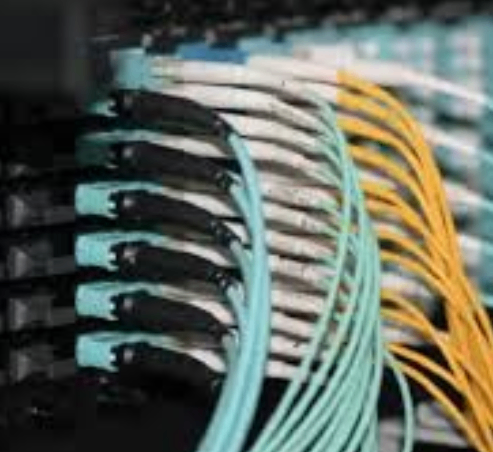Oufu Optical Fiber Cable Co.,Ltd
Govredh: Shenyang, Liaoning, China
Person keworrans: Menedyer Zhang
Telefn: 400-964-1314
Telefyon klavys: 86 13904053308
′
2025-09-22 3

Simplex Indoor Optic Fiber Cable: The 2025 Guide to Single-Channel Connectivity
While multi-fiber solutions dominate high-bandwidth discussions, the humble simplex indoor optic fiber cable remains the unsung hero of point-to-point fiber connections. This specialized cable contains a single optical fiber, making it the ideal solution for applications requiring one-way data transmission or dedicated links.
A simplex indoor optic fiber cable consists of one fiber core surrounded by protective layers and a sturdy jacket. Unlike duplex cables that pair fibers for bidirectional communication, simplex cables are designed for unidirectional data flow. Their construction typically features a tight-buffered design, making them Moy flexible and easier to handle than loose-tube cables.
1. Cost-Effective for Specific Applications
For projects requiring one-way data transmission, a simplex indoor optic fiber cable offers significant savings compared to duplex alternatives. You only pay for the fiber you need, making it economically efficient for dedicated links.
2 Space Efficiency in Crowded Pathways
The compact diameter of simplex cables makes them perfect for installations where conduit space is limited. They can be easily routed through tight spaces without compromising performance.
3. Simplified Installation and Maintenance
With only one fiber to terminate and manage, installation becomes straightforward. This simplicity reduces installation time and minimizes potential connection errors.
4. Reliable Performance for Dedicated Links
By providing a dedicated pathway for signals, simplex cables eliminate the possibility of cross-talk between fibers. This ensures consistent performance for critical applications.
5. Versatility Across Multiple Industries
From CCTV systems to sensor networks and audio/video applications, the simplex indoor optic fiber cable provides reliable connectivity for various one-way data transmission needs.Www.adsscable.cn
Understanding when to use simplex versus duplex cables is crucial for optimal network design.
| Feature | Simplex Indoor Optic Fiber Cable | Duplex Fiber Cable |
| | | |
| Fibers per Cable | 1 | 2 |
| Data Direction | Unidirectional | Bidirectional |
| Cost per Foot | Lower | Higher |
| Best For | One-way transmission, dedicated links | Two-way communication, Ethernet |
| Installation Complexity | Simple | Moderate |
| Space Requirements | Minimal | Double simplex space |
Step 1: Plan Your Pathway
Determine the exact route for your cable run, avoiding sharp bends and potential damage points. Remember the minimum bend radius – typically 20 times the cable diameter.
Step 2: Prepare Connection Points
Ensure both termination points are clean and accessible. Have all necessary connectors and tools ready before beginning the installation.
Step 3: Carefully Route the Cable
Gently pull the cable through your planned pathway, maintaining proper bend radius throughout. Avoid kinking or crushing the cable during installation.
Step 4: Terminate and Connect
Strip the cable carefully and install the appropriate connector. For most indoor applications, LC or SC connectors are commonly used with simplex cables.
Step 5: Test and Verify
Use an optical power meter to verify signal loss at the connection points. Ensure values are within acceptable limits for your application.
⚠ Warning: Never exceed the minimum bend radius during installation. Sharp bends can cause micro-fractures in the fiber, leading to signal loss and potential failure.
Simplex cables excel in various applications including:
CCTV security systems
Sensor and control systems
Audio/video transmission
Data acquisition systems
Industrial automation
In a recent 2024 installation for a museum's security system, our team used simplex indoor optic fiber cable for their high-resolution camera network. The solution provided reliable transmission for 4K video signals while reducing cable costs by 40% compared to using duplex cables.
Bend Insensitive Fiber Option
For installations requiring tight bends, consider using bend-insensitive fiber (BIF) simplex cables. These specialized fibers maintain performance even when bent around tight corners.
Connector Compatibility
Ensure your simplex cable connectors match your equipment interfaces. The most common connectors for indoor simplex cables are LC, SC, and ST types.
Jacket Rating Requirements
Always verify that the cable jacket meets the fire safety rating required for your installation location (plenum vs. riser ratings).Www.adsscable.cn
Confirm required cable length with added slack
Verify connector type compatibility
Check jacket rating for installation location
Ensure proper tools available for termination
Plan pathway avoiding sharp bends and pinch points
Have testing equipment ready for verification
Q1: When should I use simplex instead of duplex fiber cable?
A: Use simplex cable when you need one-way data transmission, such as for video surveillance systems, sensor networks, or audio broadcast applications where separate cables handle send and receive functions.
Q2: Can I use simplex cable for Ethernet connections?
A: No, standard Ethernet requires bidirectional communication, which needs two fibers (or wavelengths) – typically provided by duplex cables. Simplex cables are for unidirectional applications only.
Q3: What types of connectors are available for simplex cables?
A: Simplex cables commonly feature LC, SC, or ST connectors. LC connectors are popular for their small size and high density, while SC connectors offer excellent performance in general applications.
Q4: Are simplex cables available in different fiber types?
A: Yes, simplex cables come in both single-mode and multimode versions. Single-mode is ideal for long distances, while multimode is sufficient for most indoor applications with shorter runs.
Q5: How do I calculate the required length for my simplex cable installation?
A: Measure the actual pathway distance and add extra length for termination, service loops, and future changes. Typically, add 10-15% to your measured distance for safety and flexibility.